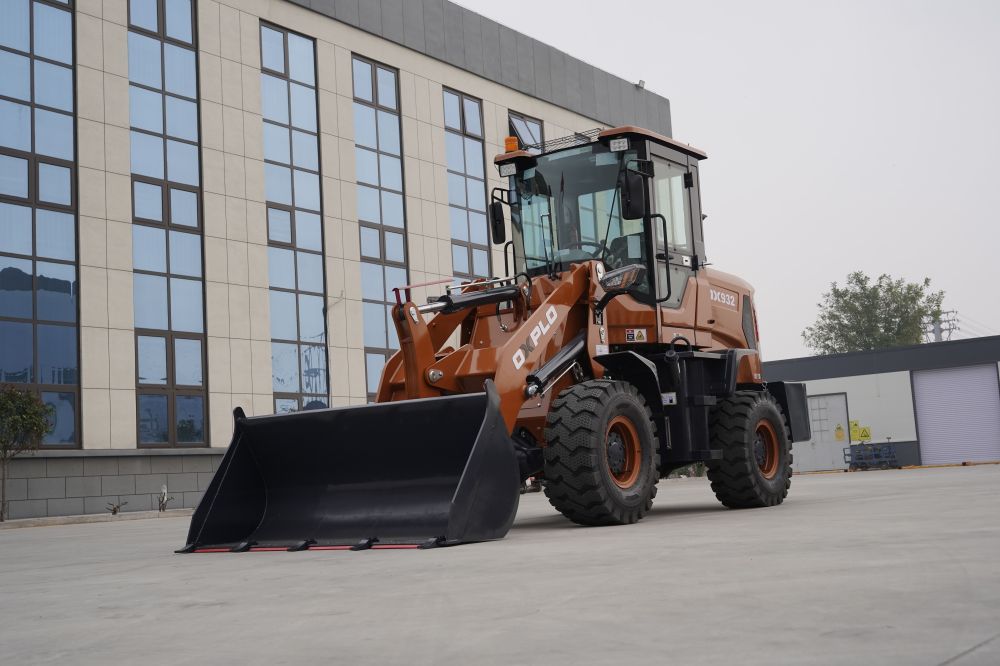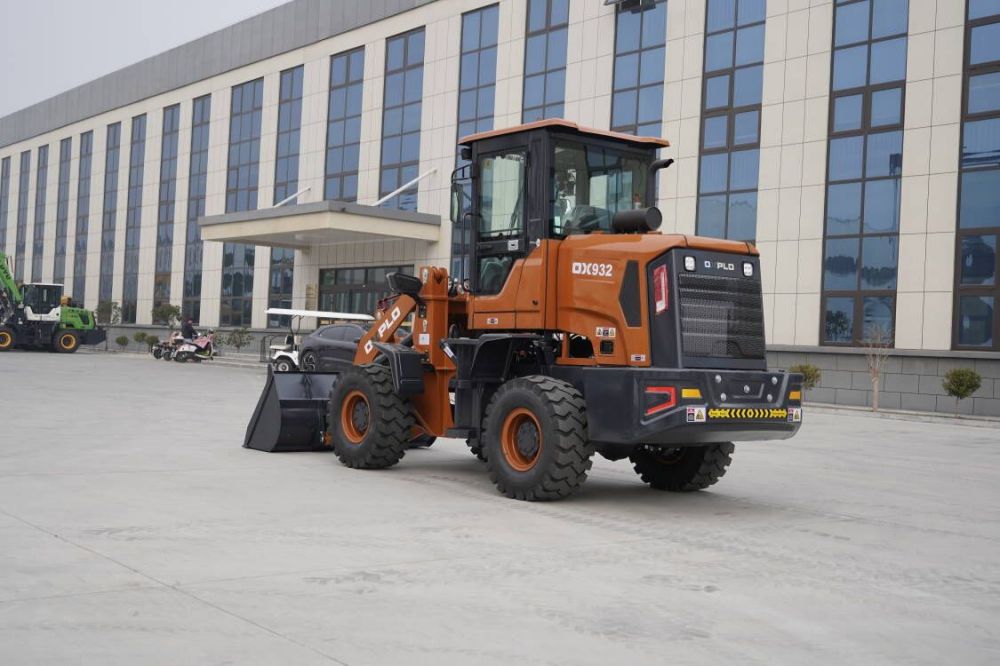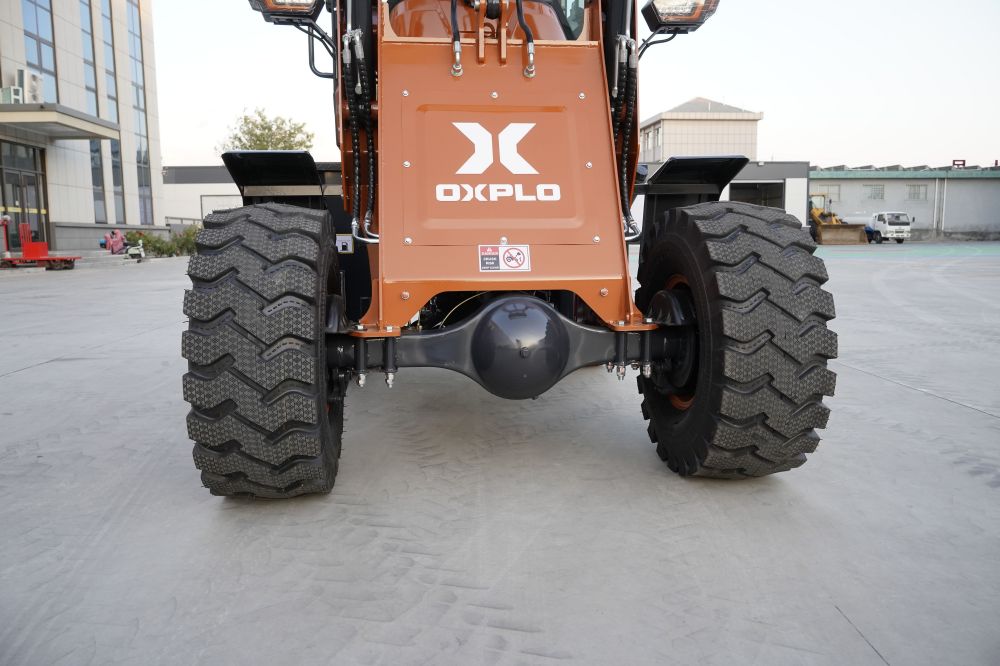The difference between wheel loaders and caterpillar loaders
2024-03-20
OXPLO brand is a professional manufacturer of loaders, with many years of production experience. Loader is a very common construction machinery in daily engineering construction, which plays an important role in various fields, reducing human labor intensity and improving work efficiency. The more common types of loaders are wheel loaders and crawler loaders, although the two types of loaders seem to have only the difference between walking devices, in fact, their respective areas of expertise are different. Let's take a look at the difference between wheel loaders and caterpillar loaders.

1. Ground adaptability: wheel loaders are suitable for relatively flat and solid ground, such as roads, hardened sites and asphalt roads. They are equipped with four wheels, providing good maneuverability and high speeds. Crawler loaders are suitable for complex, uneven terrain, such as mud, sand, slopes and weak foundations. They are equipped with a track system to provide better traction and pass performance.
2. Driving performance: wheel loader has fast driving speed and flexible steering performance. They can be quickly moved to different work areas in a short time and perform fast loading operations. Crawler loaders travel at slower speeds, but they have better traction and stability in difficult terrain and harsh conditions, such as muddy ground or slopes.
3. Impact on the ground: wheel loaders have a relatively large impact on the ground during driving, especially on soft foundations or sensitive ground. Due to the concentrated load and small contact area of the wheels, they may produce high ground pressure on the ground. Crawler loaders can distribute the load more evenly and reduce the impact and damage to the ground because of the crawler system.
4. Maintenance costs: The maintenance cost of wheel loaders is usually low, and the maintenance of wheels and axles is relatively simple and easy to replace and repair. The track system of crawler loaders is more complex and requires more maintenance work, such as track tensioning, replacement and lubrication, so maintenance costs can be higher.
5. Use environment: wheel loaders are suitable for working environments that require fast movement and frequent turning, such as construction sites, road construction and logistics centers. Crawler loaders are suitable for complex terrain conditions and harsh working environments, such as quarries, mines and agricultural fields.

Wheel loaders typically have higher travel speeds, allowing them to move quickly from one work area to another. This is important for jobs that require frequent movement or span longer distances. Since wheel loaders are equipped with wheels, they have better turning radius and handling performance. This makes them more suitable in narrow work areas or in situations where frequent steering is required. Wheel loaders are generally less expensive to maintain than caterpillar loaders. Wheels and bearings are relatively simple to replace and repair, and parts are easier to obtain and replace. Due to the relatively large contact area of the wheels, wheel loaders have less ground pressure on solid ground. This helps to reduce damage to the ground, especially in sensitive ground or applications where protection of the ground is required.
Wheel loaders are suitable for hardened surfaces such as roads, fields and tarmac. This makes them useful for routine operations in places such as construction sites, logistics centers, and urban environments. Wheel loaders generally have a lower initial purchase cost than caterpillar loaders. This is an important consideration for projects with limited budgets or requiring multiple loaders. In general, wheel loaders are more fuel efficient than caterpillar loaders. The design and mechanical transmission of wheel loaders make them more energy efficient and therefore potentially more competitive in terms of operating costs.

Finally, due to the wheel and suspension system of wheel loaders, they produce low ground vibration and noise during driving and operation. This makes wheel loaders even more advantageous in workplaces where vibration and noise effects need to be reduced, such as urban construction or noise-sensitive areas. Wheel loaders generally have better driving comfort and maneuverability. They are equipped with a comfortable cab, suspension system and advanced handling technology, allowing operators to maintain high efficiency and comfort during long periods of use.
Crawler loaders use tracks as walking devices, so that it has better performance on complex terrain such as uneven, muddy, rugged or soft soil, the tracks can better adapt to changes in the ground, and provide greater contact area and grip, thus providing better traction and stability. The track distributes the weight of the entire machine, reducing local pressure on the ground and making it more stable when working on weak foundations. This makes crawler loaders suitable for situations where they need to work on soft surfaces such as soil, mud or snow.

Because the weight distribution of the crawler loader is more uniform, its structure is more stable, so it usually has a larger load capacity. This makes them suitable for handling larger engineering projects and heavy materials. Crawler loaders have a small turning radius and better handling performance, enabling them to operate flexibly in small and complex work sites. They can more easily adapt to narrow Spaces and restrictive working conditions, improving work efficiency. The crawler loader's low center of gravity and wide contact area give it high stability and can provide smoother movement and operation while working. This is important to improve work safety and reduce the risk of overturning the machine.

It should be noted that the tracks of caterpillar loaders are generally made of rubber or metal. The rubber track is relatively light and soft, which can provide better shock absorption and reduce the impact and vibration on the ground. Rubber tracks can also provide a degree of protection, reducing damage to the ground. They are suitable for general worksites and road surfaces, providing good traction and passability on complex terrain. Metal tracks have higher wear resistance and damage resistance, and metal tracks are suitable for extreme working environments, such as mining, deforestation, and heavy duty applications such as waste disposal. They provide better traction and stability in hard, rugged, rocky or snow-covered terrain. Therefore, we can choose different materials of tracks according to our work needs, in order to improve our work efficiency.




